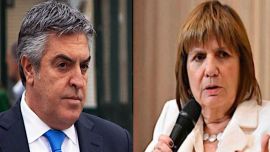Javier Milei had big, ambitious goals before he took over as Argentina’s president. One of them: getting rid of the country’s currency controls. But, to the dismay of entrepreneurs, executives and ordinary Argentines alike, that isn’t as easy as the politician envisaged.
Argentina has had strict currency controls in place for the past nine out of 13 years. They include a tightly managed exchange rate that is on average 20 percent stronger than the market rate. As part of the so-called ‘cepo,’ the government also limits the purchase of foreign currency for savings to US$200 a month, charges taxes to overseas travellers and curtails US dollars for importers. Exporters, on the other hand, have to sell their dollars for pesos.
At least for now, Milei is sticking to this regime, despite his pledges to free up all facets of the economy. Many investors expect the restrictions, which are aimed at curbing inflation, to remain in place until the fourth quarter of 2025 after Argentina’s mid-term election.
Milei’s La Libertad Avanza party is looking to boost its position and wants to avoid anything that might cause a sudden plunge in the currency before.
Stumbling blocks
The restrictions cause daily disruptions for Argentine companies importing and exporting goods. Importers rack up commercial debts to suppliers while they wait for dollars from the Central Bank, while exporters are forced to sell theirs immediately.
Carlos María Lagos is among the executives struggling with the cepo. The 44-year-old is president of Regional Cargo in Buenos Aires, an international freight forwarder.
Lagos says he is tired of asking his freight suppliers for patience.
“I pay for freight coming from China to Argentina 90 days after it leaves the port, twice as long as is usual in any other country,” he says. That’s because it usually takes 60 days for importers like him to receive dollars.
Lagos has to pay port fees to shipowners at an exchange rate of 1,175 pesos, almost 20 percent weaker than the official market rate. “These are not ideal conditions to work in,” Lagos says, adding that he is passing extra costs on to his customers.
Lagos is in favour of removing the controls: “We need to be able to trade with the world without this unnecessary bureaucracy and waste of time,” he says.
Headaches
Milei’s government is considering launching another bond for importers, known as Bopreal, according to a person familiar with the matter.
Importers can buy these bonds using pesos and hold them until maturity, when they receive dollars in return. The government has already sold about US$10 billion of these bonds.
The currency restrictions are also having other effects, for example limiting the transfer of corporate dividends abroad and the amount of dollars available to companies looking to finance themselves longer-term. Private consulting firms estimate there’s at least US$5 billion in trapped dividends.
“A release of the cepo would lower the country risk [rating] and we would find financing at more reasonable rates and longer terms,” says Pablo Calderone, head of investor relations at Aconcagua Energía, an energy-firm.
There is no plan to “bring it out in the short term, but after the elections,” he says.
Conditions met?
Milei’s government set conditions for ending the cepo that economists believe are far from being met. These include monthly inflation increases of less than 2.5 percent, Central Bank reserves turning positive and local banks reducing their holdings of Argentine public debt.
On Tuesday, he pledged that once restrictions are lifted, he will introduce a flexible exchange rate.
Inflation is currently increasing at a 3.5 percent clip every month. Combined with the 20 percent gap between the government’s exchange rate and the market rate, this highlights devaluation risks facing the peso.
The government is currently unable to refinance its obligations in the international debt markets.
Argentina’s balance of payments remains under pressure due to strong demand for dollars, imports and Argentines’ overseas spending. The country continues to have a shortage of foreign reserves, which is hindering Milei’s plan to officially dollarise the economy.
So... when?
Milei declined to set a date for lifting the cepo in an interview with the Financial Times, with Economy Minister Luis Caputo adding that such discussions were “childish.”
The Economy Ministry didn’t immediately respond to a request for comment.
Some however think there is room for a partial exit. Gustavo Cañonero, former vice-president of Argentina’s Central Bank and president of CMF Asset Management, this week suggested easing foreign exchange restrictions for individuals, which would help test market sentiment.
“It would be very valuable to see what is the demand for money and what is the excess of pesos” in the economy, he said.
Political trap
Faced with risks around resurging inflation, the government should choose wisely before it lifts the cepo, says Lucas Romero, director of Synopsis, a consulting firm.
Argentines are enduring inflation over 200 percent that — while slowing — was fanned last December when Milei devalued the peso 54 percent overnight, spurring steep price hikes.
“If the government has to choose between maintaining the exchange controls or generating volatility in inflation, it will choose the first one. There is a political trap there,” Romero said.
related news
by Ignacio Olivera Doll, Bloomberg




















Comments